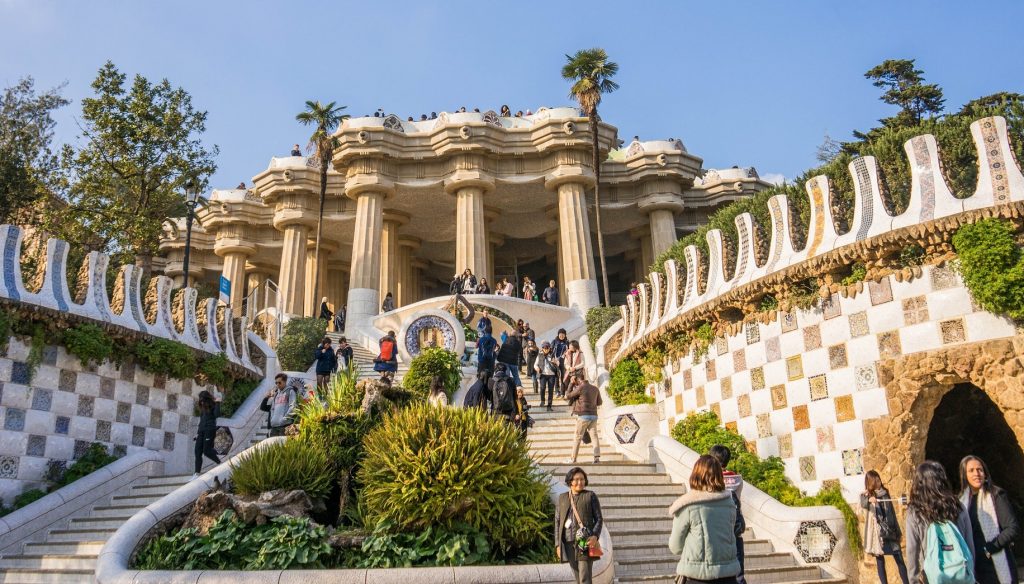The real effects of architecture on the mind, body, and spirit
(Waking Times | Tera Graham) We spend an overwhelming amount of time in and around buildings; most Americans never leave the comfort of cities, where sizeable structures abound. Yet, rarely do we consider the profound effects architecture has on our everyday experiences. Only standing at the feet of major architectural monuments — like the Burj Khalifa in Dubai and the Great Pyramids outside Cairo — do we stop and consider how magnificent mankind’s ability to build is.
However, more and more scientists are beginning to realize that architecture, like any art form, has the power to influence how we perceive the world. As we learn how architecture can impact our experience of life, we can better control our environments for maximum efficiency — and maximum pleasure.
The science and art of perception
Every second we are awake, our brains track variables like heat, light, odor, noise, and movement to ensure our bodies can continue living. Though we rarely realize it, our minds are always aware of the effects of various environments, and that subconscious perception can dramatically affect our experiences of different places. For example, loud, grating sounds usually make spaces less pleasant, while soft, natural light generally makes spaces more inviting.
Neuroscientists are increasingly discovering that the brain is constantly making associations, and oftentimes, these links employ metaphors that are grounded in the physical world we perceive. The intangible concept of “importance” is generally identified as large, though as an idea, it lacks any size or dimension whatsoever. Similar examples are common in language: Our endeavors are completed “step by step,” as though we are walking the concrete path of our tasks, and being “lost in one’s thoughts” likens deep concentration to exploring a dense forest. It is becoming clear to scientists and artists alike that what we perceive informs what we believe. Fortunately, architects are using this newfound knowledge for the better.
The application of metaphor
Armed with the awareness that our brains are constantly making connections between the corporeal and the conceptual, today’s architects strive to generate certain unconscious effects with their buildings. One of the most pervasive trends in modern architecture is the metaphor of the tree.
Trees have always indicated shelter for humankind: They offer protection from harsh sunlight, from pouring rain, and from dangerous predators. Plus, as humans strive to right their historic environmental wrongs, the tree has become a symbol of sustainability, nature, and health.
Therefore, several architects are now drawing from trees to create healthful, ecological-seeming buildings. The Kanagawa Institute of Technology in Japan contains a “forest” of pillars that closely resemble white saplings. In Spain, the Metropol Parasol uses laminated timber to form a sinuous canopy over a popular plaza.
By integrating elements of trees ― trunks, branches, leaves ― the architects of these buildings have produced not only aesthetically breathtaking structures but also subtly comforting spaces suffused with nuances of nature. Yet, as neuroscience unlocks more of the cognitive impacts of architecture, all structures could have even more powerful metaphor built in.
The future of cognitive architecture
The cognitive revolution is just getting started, and we are only beginning to understand how our brains and bodies take in the world around us. Experts in neuroscience and architecture alike look forward to advancements that can have beneficial applications in all sorts of structures.
For example, nearly everyone has experienced a less-than-ideal working environment. Flickering fluorescent lights, freezing or sweltering temperatures, conflicting design elements, and more can dramatically increase stress amongst a workforce, depleting energy and preventing productivity. When these errors are remedied, the effects of an environment are immediately obvious.
In some industries, especially within the industrial sector, we already have sturdy, somewhat more sustainable, buildings that provide benefits workers need: fabric structures. However, in other fields, like health care or education, we eagerly await breakthroughs that demonstrate real impact. With evidence from cognitive science, we can construct hospitals that help patients heal with design and schools that encourage learning through materials and angles.
Though it happens constantly, perception is an intensely complex task. The spaces around us ― both the ones we create and the ones governed by nature ― inform how we live and how we think. Thus, it is imperative that when we construct, we be amply aware of the effects of our constructions: on the environment and on ourselves.
Source: Waking Times




